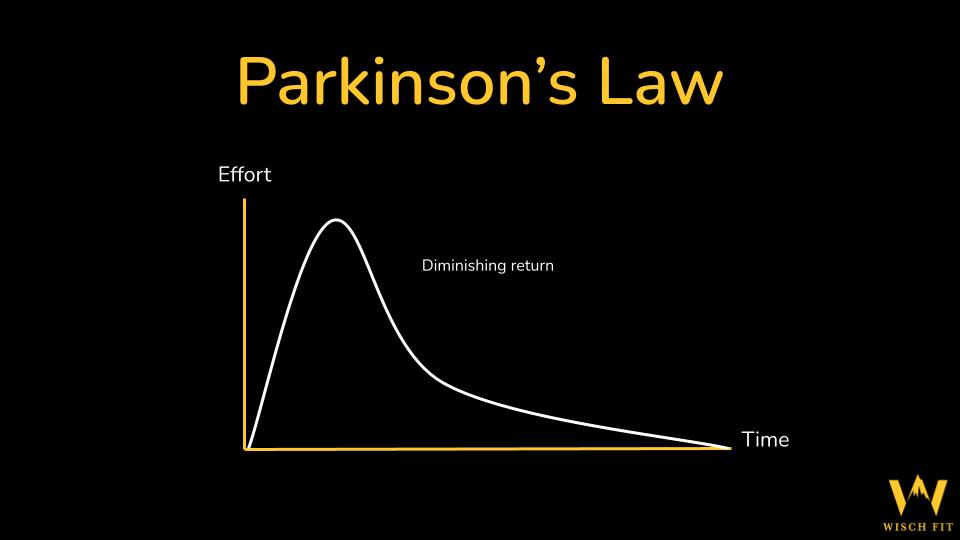During life, you can always make more money, but you can never get back time. I offer guidance on how to save seven and more hours during your workweek while increasing your productivity to maximize your weekly earning potential. This means achieving your professional goals quicker and having more time for active recovery, family, friends, and leisure activities. Here are my three career-changing tips:
For my first tip, you want to reduce any friction and unnecessary cognitive load that slows your mind down during the day. Imagine you have your computer on and a dozen tabs are open. How fast does your computer work? It slows down because you are utilizing a lot of the working memory. This is similar to how our brain can only manage four ideas at any given point in time. The first step to reducing cognitive load is becoming a master planner. Schedule a 20-minute planning session at the end of your workday to write down all your next-day goals and step-by-step action plan. Everything you write needs to be as detailed as possible and include any supplies and a step-by-step timeline for that day. In addition, you want to make sure you have your chargers, electronic devices, documents, and anything else located and ready to go that is part of the daily plan. Lastly, it is crucial to have your workspace clean and with minimal distraction. All of this allows us to start the morning running and keeps our attention on each task without worrying about what to expect later in the day. As Abraham Lincoln once said: “Give me six hours to cut down a tree and I will spend the five hours sharpening my ax.”

For my second tip, focus on the quality of hours worked over working more hours. Many people have the idea that working longer days will equate to a greater outcome, but this is anything but the truth. Even if you get paid per client, seeing endless clients will only get you so far and cause burnout. You want to offer the best service possible and charge a premium. In order to improve quality hours, you need to understand that the mind and body follow ultradian rhythms, a rhythm for peak productivity followed by recovery. People work best in 90-minute blocks of time with 20 minutes of active recovery. For those 20 minutes, you can do light exercise, go for a walk outdoors, practice mindfulness, perform light stretching, or other activities, and unload your thinking. Try to avoid activities like watching TV that has a high stimulus load. The number of ads and content thrown at you in a short period of time can ramp up the cognitive load and reduce concentration for the next 90-minute work block. In addition, use some of the 20-minute recovery time to check in with yourself to see if you are hungry, need to use the bathroom, or have other needs. Then, go into your work with purpose and passion by asking yourself how do you want to show up, what do you want to accomplish, and how do you want to be perceived by others.
“Don’t worry about breaks every 20 minutes ruining your focus on a task. Contrary to what I might have guessed, taking regular breaks from mental tasks actually improves your creativity and productivity. Skipping breaks, on the other hand, leads to stress and fatigue.”
– Tom Rath
For my third tip, reduce the time for meetings and projects by one-half. This concept is supported by the Parkinson’s Law, which states how work expands to fit the time available for its completion. Productive drops off towards the end of a deadline or last 30-15 minutes in a meeting.

The idea of reducing the time for projects or meetings by one-half might at first sound anxiety-provoking, but there are two essential components that help optimize for success. First, we need to apply the Bannister Effect, which is the concept that if we believe something is possible, then the likelihood of success dramatically improves. Bannister was the first person to run a 4-minute mile. Within weeks after accomplishing this unimaginable goal, other people were breaking this same barrier because they now had the proof that it was possible. This means it is essential to trust both of these concepts and believe in the outcome. If you have a team, then you need to let them know that you are extremely confident they can accomplish their task by highlighting their past accomplishments and current strengths.
The second essential concept is to apply the skills to challenge ratio. When shrinking the timeslot for a task meeting, you want to push the challenge of the overall task to 7-14% above your or your team’s skillset. This window creates a stimulus that triggers an optimal level of concentration and productivity called flow. If the challenge is too high, you will become too anxious, and if the challenge is too easy, then boredom will set in. Imagine if you could reduce each meeting you or your business have by 20-30 minutes each week or cut off a few hours from each deadline. What would you do with that extra time?
The final tip I want to share with you is about creating communication boundaries and significantly reducing distractions during your work blocks. The first step is to turn off all notifications on your phone and computer. This means you will not be notified when people message, text, email, or call you during your work block. Schedule specific 2-3 times per day to only check your emails and let others know about your work ethics. Some people prefer to mention it in their signature or say they will respond to emails within 24 hours. Apply this same concept to all forms of communication for optimal productivity. When you put your phone in Do Not Disturb mode, you can still receive emergency or important work calls by going to the Do Not Disturb settings on your phone and add numbers that will ring or allow calls to go through if the person calls twice in a row. At first, you may experience a little separation anxiety from your connection to the outside world, but I can assure you this feeling will diminish and you will greatly optimize your focus and overall productivity. Initially, some people who are used to getting immediate gratification by you responding might become frustrated, so explain to your coworkers and friends that you are not responding in order to optimize your workday, get closer to your professional goals, and free up more personal time.

The above three tips are just the beginning when it comes to accelerating your professional career while regaining control of your life. These are a few steps to creating a flow-rich lifestyle where you are able to utilize a state of mind where you have optimal focus, mental clarity, creativity, and a feeling of wellbeing. If you are interested in learning more about increasing productivity, accomplishing profound professional goals, increasing personal time, and maximizing your health along the journey, feel free to book your free consultation by clicking here.

